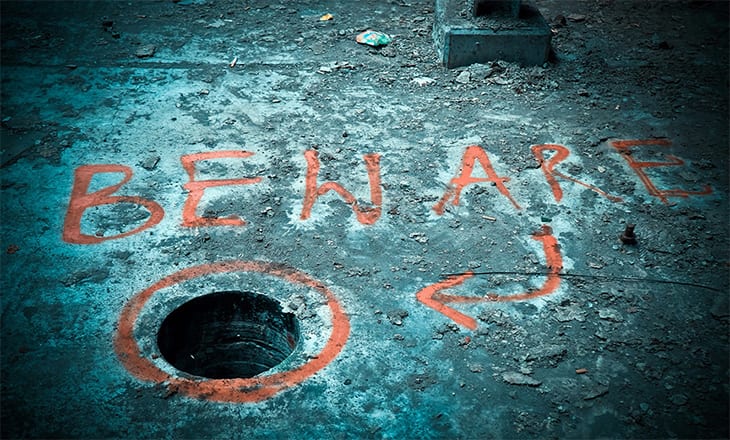The Greenwich Associates (GA), a global analytics and consulting firm based out of Stamford, Connecticut, has published a new report, which sounds an alarm bell that blockchain technology, i.e., Distributed Ledger Technology (DLT), when applied to the cross-border payments space, could be overly disruptive and undo financial arrangements that have evolved over centuries. The report even goes so far as to suggest that, “Distributed ledger technology could reintroduce problems financial markets have been working to alleviate for more than 500 years.”
Is GA on the money or blowing smoke? Before answering this question, it might be nice to know who their clients are. Per their website, the first sector listed includes banks, commercial banks, retail banks, and credit unions, the very entities that this “disruptive” technology could impact in big ways, according to the GA report. But what kinds of disruptions are we talking about? The payment “rails” that serve international commerce are antiquated, but secure, and depend heavily on the centralization of control measures, the exact opposite of what a decentralized ledger encompasses.
The GA report, entitled “Steampunk Settlement: Deploying Futuristic Technology to Achieve an Anachronistic Result”, seems to imply that to deploy DLT solutions would be replacing one “antiquated” system with one that was, well, more “antiquated”, if that makes sense. Ken Monahan, senior analyst for Greenwich and the author of the report, explains:
DLT has great potential to enhance the existing system. But in reality, the technology is evolutionary, not revolutionary, and attempting to replace the clearing infrastructure with this technology is to carry the system not into the future, but into the past.
Monahan goes on to provide a centuries-old example, then concludes with his hypothesis:
This is precisely the lesson the Venetian Senate learned in 1584 in a strikingly similar way. By substituting a payment system for a credit system, they sucked liquidity out of the economy. Unlike the Venetians, who really did blaze a new path, we have the benefit of learning from history, and this is its lesson: DLT has a big role to play in improving the quality of the settlement infrastructure, but it cannot replace it entirely without imposing the very costs it was designed to reduce.
Should we accept Monahan’s contention at face value or dig a little deeper? Let’s break it down, as follows:
- Disruptive technologies always change the “status quo” that has developed over time, especially how cost burdens are shared and fees are assessed. Cross-border wire transfers have a multitude of various ways that deal with these issues. DLT will surely force a “redressing” of how costs and fees are handled?
- The evolving digital world and society demands “transparency” in all transactional matters, but cross-border payment assessments are some of the most confusing and obfuscating fee mechanisms on the planet, all perpetrated by the existing banking establishment. For this reason, there have been hundreds of new companies over the past few decades that have tried to attack the monopolistic hold that major banks have on this arena, but to no significant avail. There is a reason banks fight hard to maintain the status quo – they are raking in enormous profits from foreign exchange markups and various fee related revenue streams.
- Mr. Monahan claims a major “prefunding” requirement could rob local economies of funds and liquidity. Cross-border wires take on average 48 hours or more to complete. The originating bank retains the “float” for that period interest free and typically invests the float in overnight securities or with its central bank. Yes, DLT solutions could revamp how float is distributed in the system, but transparency would be served, and remember, banks would be senders and receivers.
- Correspondent banking networks have evolved over centuries, where smaller banks align with major banks to be able to access the global wire transfer system. Yes, new correspondent relationships will evolve over time, as needed.
- Lastly, major banks with “footprints” in global markets will still capitalize on their internal network, where transfers are netted between branches electronically, and no funds are actually moved. Banks really profit in this environment by keeping fees and float to themselves. Even JPMorgan Chase sees the DLT advantages that will occur in its back office, the basis for its crypto project launch.
In conclusion, will DLT solutions be disruptive in the cross-border payment arena? Yes, of course they will, but what of it? What comes to mind is a quote from a commissioner of the SEC, Hester Peirce, who is also affectionately referred to as “Crypto Mom”. She was bothered by agency heads trying to rule on decisions that our markets are very clever at determining for themselves. Ms. Pierce remarked:
Sometimes things that [require fighting for] make it to market and they fall, and that’s the way it is, but that’s the market’s decision.
In other words, let the market sort it out. If DLT solutions are worthy, they will prosper. If not, then “they fall”.
You might also want to read:
